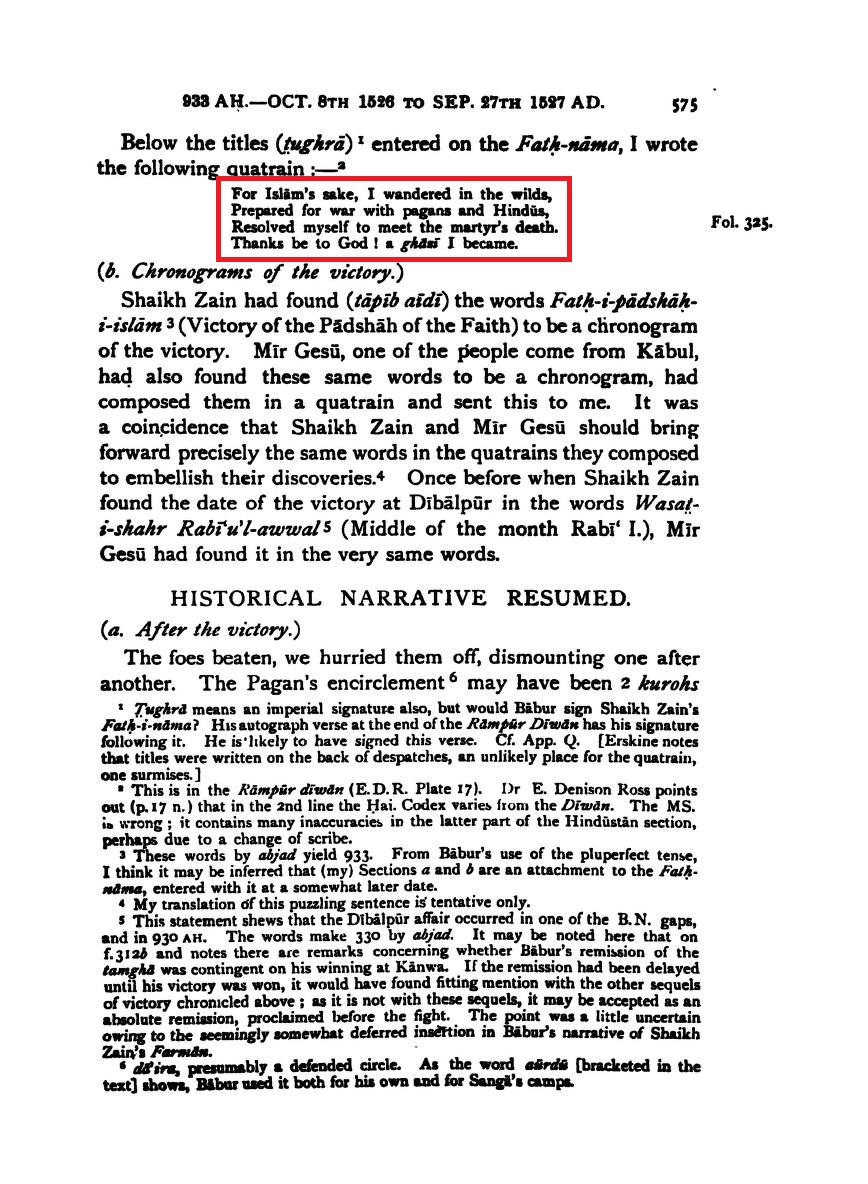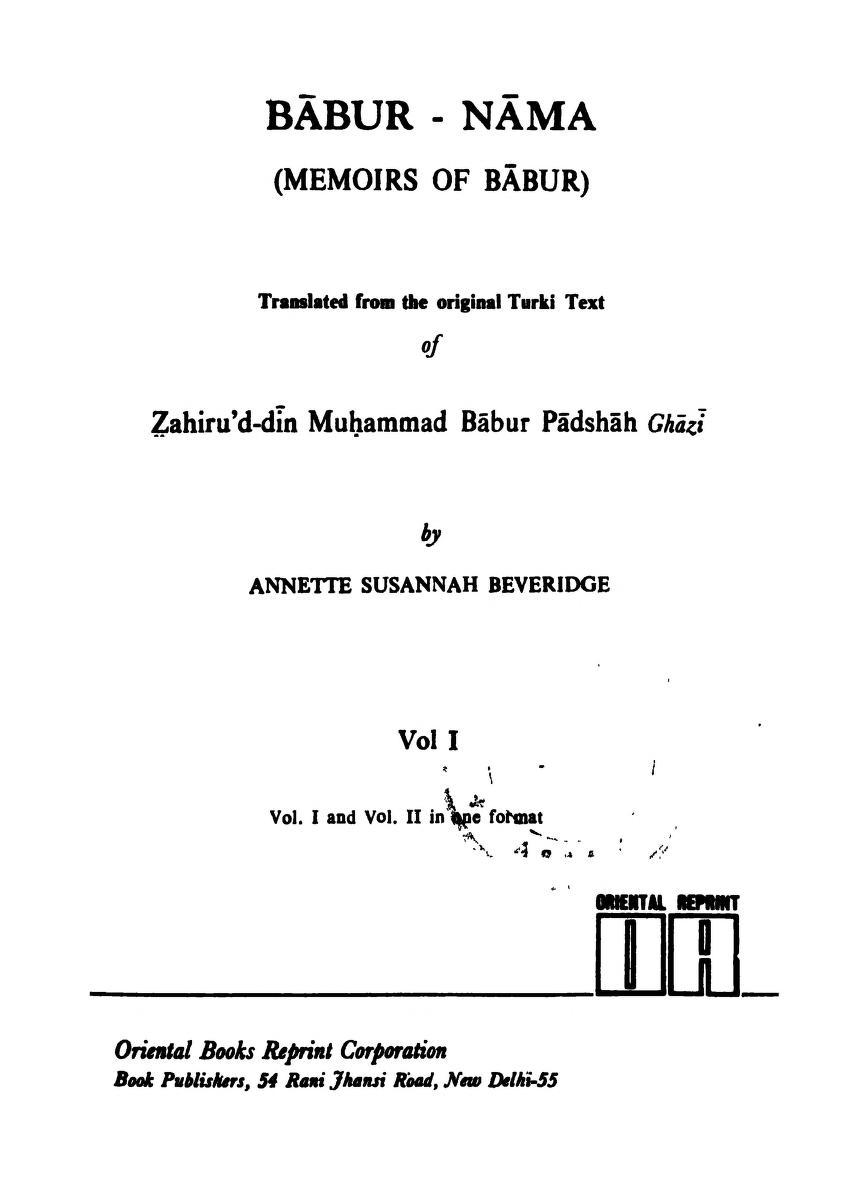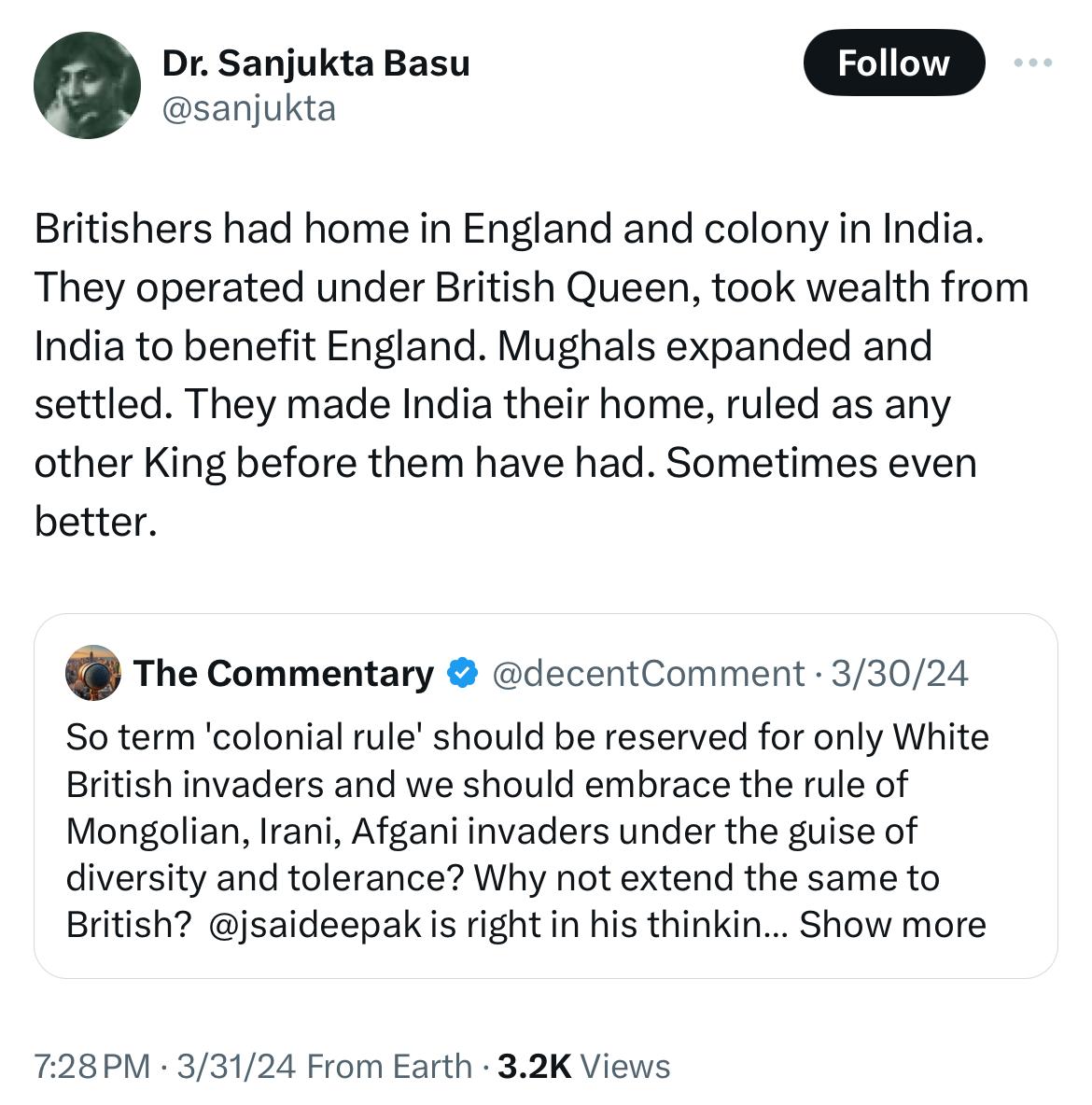
How to get URL link on X (Twitter) App


https://x.com/Schandillia/status/1989880732727349426“Babur is harshly criticised for being too much of a religious fanatic committed to rooting out the kafirs and infidels.”





 Turns out, the title was first accorded to him as early as 1917 in a Ghadar Party publication calling for his release from Cellular. Of course, I can’t read Urdu, nor is this my own finding. These are the two sources should you feel like a deeper dive:
Turns out, the title was first accorded to him as early as 1917 in a Ghadar Party publication calling for his release from Cellular. Of course, I can’t read Urdu, nor is this my own finding. These are the two sources should you feel like a deeper dive:



 2/25
2/25
 This is him now. I mean as of 2014. Or 2008, who knows. What happened?
This is him now. I mean as of 2014. Or 2008, who knows. What happened?

 2/16
2/16
 Before all else, let’s be very clear on one thing:
Before all else, let’s be very clear on one thing:

 The whistling arrow was a three-stage loyalty test developed by Modu for his army. The enchanted arrow, as the name suggests, made a whistling sound as it flew off the bowstring. The directive was simple—shoot in the whistle’s direction, whatever be at the other end. Fail to do so, and you die.
The whistling arrow was a three-stage loyalty test developed by Modu for his army. The enchanted arrow, as the name suggests, made a whistling sound as it flew off the bowstring. The directive was simple—shoot in the whistle’s direction, whatever be at the other end. Fail to do so, and you die.



 Here’s exhibit A. The Fall of Constantinople 1453 by Sir James Cochran Stevenson Runciman, Steven Runciman for short. The name might not ring a bell but it should if you enjoy Byzantine history as an area of interest. Best known for his work on the Crusades, his Fall of Constantinople is universally lauded as the single most authoritative and detailed recounting of the event in question.
Here’s exhibit A. The Fall of Constantinople 1453 by Sir James Cochran Stevenson Runciman, Steven Runciman for short. The name might not ring a bell but it should if you enjoy Byzantine history as an area of interest. Best known for his work on the Crusades, his Fall of Constantinople is universally lauded as the single most authoritative and detailed recounting of the event in question.



 Whenever we talk destruction and vandalism, we imagine Mughals. But that isn’t necessarily right. The Mughals converted plenty of temples, the peak season being that of Aurangzeb (I won’t even get into his topic because that’s been done to death), that’s true. But they weren’t the first to do it. Long before the first Timurids even came into existence, there was a Delhi Sultanate that reigned just as long as the Mughals did. In light of their successor dynasty, we often tend to underestimate their barbarity.
Whenever we talk destruction and vandalism, we imagine Mughals. But that isn’t necessarily right. The Mughals converted plenty of temples, the peak season being that of Aurangzeb (I won’t even get into his topic because that’s been done to death), that’s true. But they weren’t the first to do it. Long before the first Timurids even came into existence, there was a Delhi Sultanate that reigned just as long as the Mughals did. In light of their successor dynasty, we often tend to underestimate their barbarity.





 2. THE HARAPPANS PRACTICED SEGREGATION.
2. THE HARAPPANS PRACTICED SEGREGATION.



 The Chang'e 5, China’s first sample-return mission, discovered the mineral in 2020. It was named after the Chinese Moon goddess Cháng'é.
The Chang'e 5, China’s first sample-return mission, discovered the mineral in 2020. It was named after the Chinese Moon goddess Cháng'é.



 Chaudhry Rehmat Ali wanted to be known as and openly called himself the “founder of the Pakistan National Movement.” In 1933, he published “Now or Never,” a leaflet announcing his call for a separate Muslim nation. This was 2 years before Lahore Resolution.
Chaudhry Rehmat Ali wanted to be known as and openly called himself the “founder of the Pakistan National Movement.” In 1933, he published “Now or Never,” a leaflet announcing his call for a separate Muslim nation. This was 2 years before Lahore Resolution. 

 2/17
2/17 